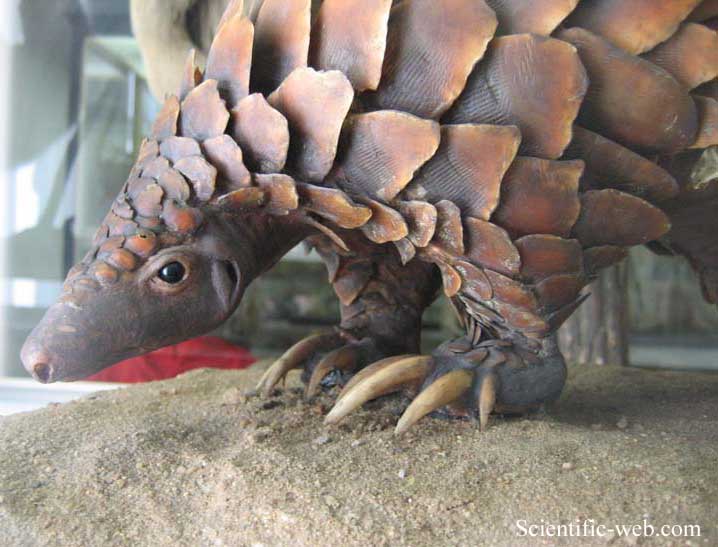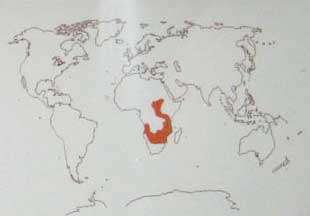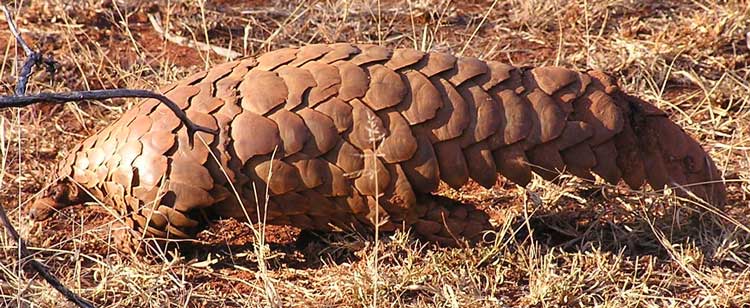Manis temminckii , Photo: Michael Lahanas Cladus: Eukaryota
Name Manis temminckii Smuts, 1832 Synonyms Smutsia temminckii Vernacular names The Ground Pangolin (Manis temminckii), also known as Temminck's Pangolin or the Cape Pangolin, is one of four species of pangolin which can be found in Africa and the only one in southern and eastern Africa. Although it is present over quite a large area, it is rare throughout it and notoriously difficult to spot. Its scarcity is partly because it is hunted by humans for its scales, which are used in love charms, and partly because it is often burnt in bush fires. It was once designated an endangered species by the United States Fish and Wildlife Service,.[3] With the exception of the underside, it is covered in extremely hard scales. When threatened, it usually will roll up into a ball to protect the vulnerable belly. The scales on the tail can also be used as blades to slash at attackers. The Ground Pangolin can grow to a length of about 1 metre, with the tail typically between 30 and 50 cm. It has a disproportionately small head, powerful hindlegs, and small forelegs. Like other pangolin species, it is largely nocturnal, although it is also entirely terrestrial and usually found in savanna or open woodland, generally feeding on termites or ants. It is well adapted to this, with a very long (up to 50 cm) sticky tongue which is stored inside a pocket in the mouth until needed. Although it is capable of digging its own burrow, it prefers to occupy disused holes dug by a Warthog or an Aardvark or to lie in dense vegetation, making it even more difficult to observe. This animal was named for the Dutch zoologist Coenraad Jacob Temminck. ^ Schlitter, Duane A. (16 November 2005). Wilson, Don E., and Reeder, DeeAnn M., eds. ed. Mammal Species of the World (3rd ed.). Baltimore: Johns Hopkins University Press, 2 vols. (2142 pp.). pp. 531. ISBN 978-0-8018-8221-0. OCLC 62265494. Source: Wikipedia, Wikispecies: All text is available under the terms of the GNU Free Documentation License |
|




